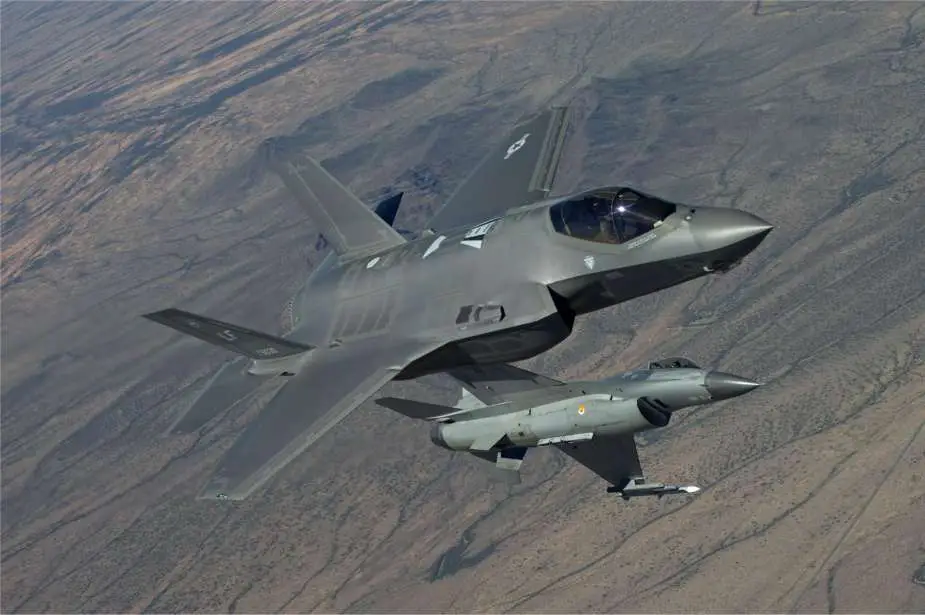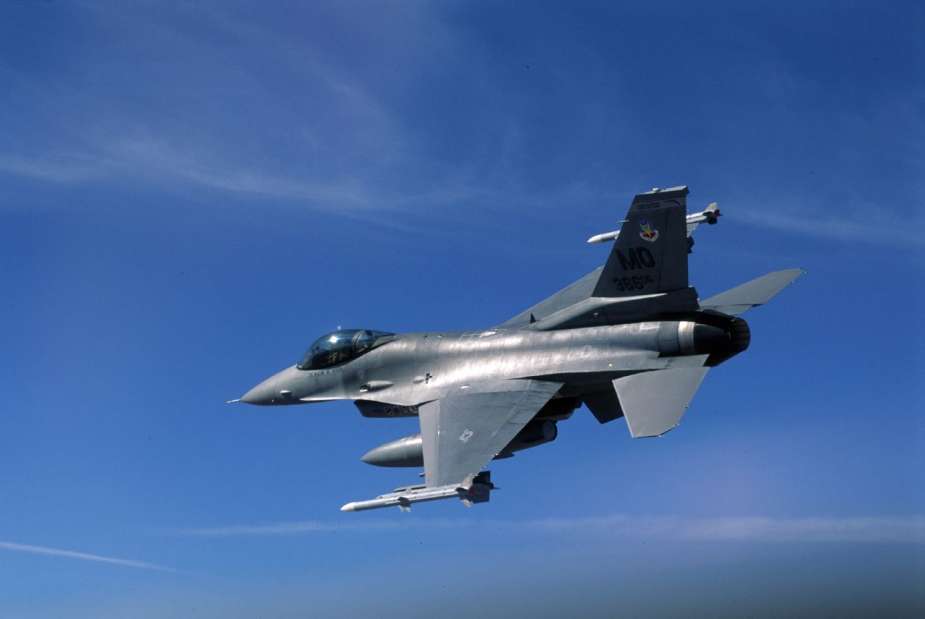In an interview with Diario de Noticias on April 12, 2024, the Portugal Air Force Chief of Staff, General João Cartaxo Alves, confirmed that the Lockheed Martin F-35 Lightning II fighter will be the replacement for the F-16M Fighting Falcon. The decision is part of an effort to maintain alignment with most European allies who have already initiated transitions to the F-35, according to the General.
Follow Army Recognition on Google News at this link

Portugal has not donated any F-16 aircraft to Ukraine, as the Air Force needs to maintain its operational readiness until the transition to the F-35 is complete. (Picture source: Lockheed Martin)
The replacement of the F-16M is deemed necessary to preserve the operational credibility and strategic relevance of the Air Force, as the F-35 Lightning II exhibits several advantages compared to the F-16 Fighting Falcon. The F-35 features stealth technology, which reduces its visibility to radar, unlike the F-16 which lacks this capability. Additionally, the F-35 is equipped with more advanced sensors and a sophisticated avionics system that provides improved situational awareness through data integration from multiple sources.
The F-35 also supports a wider range of missions, including air-to-air combat, air-to-ground strikes, and intelligence, surveillance, and reconnaissance tasks, enabled by its integrated systems. In contrast, while the F-16 is noted for its agility and has been a reliable aircraft for various missions over the years, it does not offer the same level of sensor integration or stealth capabilities as the F-35. The F-35 also generally carries a larger payload and has a longer range than the F-16, which can enhance its operational flexibility in combat scenarios.
Over the past two years, the Portuguese Air Force has initiated an in-depth transformation process, adjusting its structure and approach across several dimensions. This effort includes operational and organizational changes, coupled with the implementation of a people-centered philosophy, which focuses on the recruitment and training of skilled personnel critical to mission efficacy.
This transformation also extends to technological upgrades, as the Air Force prepares to integrate advanced systems and strengthen cybersecurity measures vital for modern communication protocols. This adjustment aligns Portugal with its European allies in transitioning from a traditional air force to a more technologically advanced space air force. Additionally, the Air Force is preparing for the adoption of fifth-generation aircraft, which includes updating systems and processes to meet current and future defense requirements.
Regarding the training of Ukrainian pilots for F-16 aircraft, General Alves acknowledged Portugal's involvement in the process, which commenced in July 2023. Initially, Portugal provided instructor pilots, maintenance technicians, and mission planning instructors. However, in November of the same year, two training centers were established for Ukrainian pilots, one in Denmark and one in the Netherlands. This development was based on agreements with countries offering their F-16s to Ukraine, albeit with legal challenges arising regarding the cross-border nature of the training.
General Alves clarified Portugal's position, stating that while other European nations have transitioned from the F-16 to the F-35, Portugal has not donated any F-16 aircraft as it still requires its fleet of 28 jets, having previously sold 12 to Romania. This decision is aligned with the necessity to maintain the Portugal Air Force's operational readiness until the transition to the F-35 is complete.

The program to replace the F-16 is projected to cost 5.5 billion euros and is designed to span 20 years, with the initial F-35 aircraft deliveries scheduled to commence in the seventh year. (Picture source: Lockheed Martin)
The program is projected to cost 5.5 billion euros and is designed to span 20 years, with the initial aircraft deliveries scheduled to commence in the seventh year. This financial strategy involves spreading the substantial cost over two decades, and includes logistical collaboration across several European countries. The initial stages of this transition have already begun, marked by workshops with Lockheed and the American Air Force to align with the operational capabilities of fifth-generation aircraft. This structured approach ensures the phased implementation of the F-35, integrating it systematically into Portugal’s defense framework.
Several NATO members have begun transitioning from the F-16 Fighting Falcon to the F-35 Lightning II, reflecting a broader trend within the alliance toward adopting this advanced fifth-generation fighter aircraft. To date, Australia, Belgium, Denmark, Germany, Greece, Israel, Italy, Japan, the Netherlands, Norway, Poland, South Korea, Singapore, Switzerland, the United Kingdom, and the United States are among those either in the process of adopting or have already integrated the F-35 into their respective air forces.
For instance, Australia has received 63 F-35A aircraft out of the 72 ordered, while Belgium plans to procure 34 F-35As. Denmark has taken delivery of 10 F-35As, with plans for a total of 27 for the Royal Danish Air Force. Similarly, Italy has received 17 F-35As and 3 F-35Bs for its air force, along with 3 F-35Bs for its navy. Japan, with 27 operational F-35As, has a total order of 147, including both F-35As and F-35Bs. The Netherlands and Norway have also received deliveries of their F-35As, with plans for additional aircraft to fulfill their respective air force requirements. Additionally, Poland, South Korea, Singapore, Switzerland, the United Kingdom, and the United States are actively procuring and integrating F-35 variants into their military forces.
The F-35 Lightning II, primarily developed by Lockheed Martin, is a fifth-generation multirole combat aircraft designed for a variety of military operations including air-to-air, air-to-surface, and electronic warfare. The aircraft employs advanced stealth technology to reduce its radar cross-section, which aims to increase its survivability in hostile environments. It is equipped with integrated electronic systems such as the Electro-Optical Targeting System (EOTS) and Distributed Aperture System (DAS), which enhance its reconnaissance and situational awareness capabilities and contribute to its capabilities in missile defense and air combat. These systems allow the F-35 to monitor its surroundings and engage targets at considerable distances.
Powered by a Pratt & Whitney F135 engine capable of delivering 43,000 pounds of thrust, the F-35 Lightning II has a maximum speed of approximately Mach 1.6, equivalent to about 1,975 km/h. For armaments, the F-35 can be equipped with a variety of weapons. It has internal bays that can hold AIM-120C air-to-air missiles and GBU-32 JDAM guided bombs among other munitions tailored for different mission requirements. The F-35 has a standard weapon capacity of over 18,000 pounds, and it can increase this load to 22,000 pounds in a configuration colloquially known as "beast mode." The aircraft's design includes stealth features to reduce its visibility to radar, enhancing its effectiveness in combat situations where stealth is crucial.
















